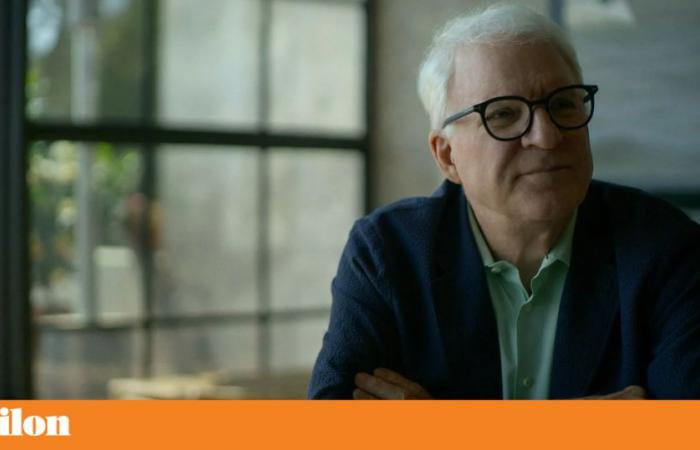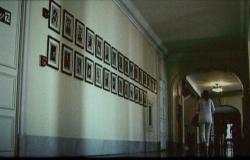In 1989, Steve Martin marked Monty Python’s 20th anniversary in a television special. In his narration, he spoke of “a comedic force that was so original”, “goofy” and “fabulously different” that “many people felt the world of entertainment had changed forever”. He was “intelligent, some would even say intellectual”, but also “popular”. “Subtle but also simple”, “dangerous but warm”, “visual” but also “literate”, “with a big heart, generous, anarchic and, above all, hilarious”. “But enough talking about me”, he concluded. It was true. Martin was all of that when he appeared, even though it took almost ten years longer than Monty Python to become a phenomenon, the first person to make stand-up in stadiums. At the same time, it was also a perfect illustration of the persona Steve Martin on stage: a parody of a bad comic with the extreme arrogance of an idiot who thinks he’s special, even though he doesn’t have any particular talent.
Morgan Neville, the director who won the Oscar Two Steps to Stardomtells the life of Steve Martin in STEVE! (martin) a documentary in 2 pieces, a new Apple TV+ documentary premiered last Friday. It is divided into two distinct parts, each around an hour and a half, not only in content, but in form. Neville asked the editors of each part, or film, not to talk to each other and not to see what they were doing, to mark the difference between the two volumes.
The first part, Then, covers Martin’s early life and his career until the end of the 1970s. In other words, the times when he was a giant on stage and on television, becoming a celebrity and a bit of what he was enjoying: a comical with catchphrases repeated by everyone. It’s a gigantic cultural impact that may not be obvious or even known to those who grew up watching Martin as an actor in family comedies, such as The Father of the Bride or A Dozen is cheaperor even those who only identify him as one of the faces of Homicides at Home. The story, much of it familiar to anyone who has read it (or heard it, narrated by himself with banjo interludes) Born Standing UpMartin’s excellent 2007 memoir, goes through his time working at Disneyland, his interest in magic, his study of philosophy and his love of deconstructing everything.
It is told with archive images and testimonies (voice only) from himself and some of the people around him. Some have even disappeared, like Bob Einstein, friend and colleague. Einstein was the brother of Albert Brooks, another deconstructive force in show business and comedy in general. It is therefore strange that Martin, in the narration, talks about the premiere of Saturday Night Live as a moment when he found people who were doing the same thing he was doing, at the beginning of a new movement, and Brooks, who was part of the first season of the program, is not even mentioned – the documentary that Rob Reiner made about Brooks in last year can help cross-reference information. It all culminates in The Foolby Carl Reiner, Martin’s entry into cinema, which coincides more or less with the end of his career in stand-up.
In the second film, Now, we see Martin, and some collaborators and friends, in the flesh. We have the continuation of the story in the cinema, with all the ups and downs, of flops as Money from Heaven The Three friends, which gave him Martin Short, a partnership and friendship that lasts to this day. We see him, for example, at home in New York and Los Angeles, listening to old recordings of stand-up, talking about art and films, working with Short in the live shows they both do and riding bikes. We caught him looking back: trying on his coat Three friendswatching the scripts of the films he made and remembering John Candy in Better alone than in bad companyas well as working on the book of cartoons – that come to life here and even mirror his own anxieties and fears about revealing himself in the documentary – about his career in cinema. He also talks to Jerry Seinfeld. He has a lot of melancholy and periods of depression, extreme loneliness even when he was so famous that he couldn’t go out on the street, a longing and desire that permeates almost all of his characters in the cinema. And he remembers, for example, the moment when Dennis Pennis, the character of British comic Paul Kaye, asked him in 1996 why he was no longer funny.
We try to understand a mystery: who is Steve Martin outside of persona Steve Martin? This part also features his reinvention not only as a musician who plays the banjo, but also as a family man, who married Anne Stringfield in 2007, and had a daughter at a very late stage in life, in 2012. The only daughter is shown in a stick figure drawing, to preserve privacy. We try to show how, at 76 years old – this was shot in 2022 –, Steve Martin is finally a happy man, who when he thinks about death, which he knows is close, he deals with much better than he did at 40 years old.
Tags: Steve Martin Television
--





